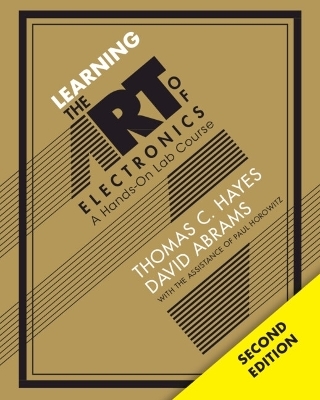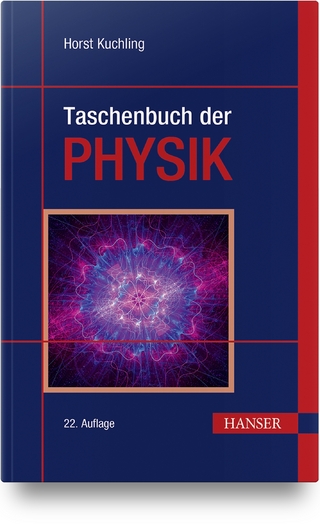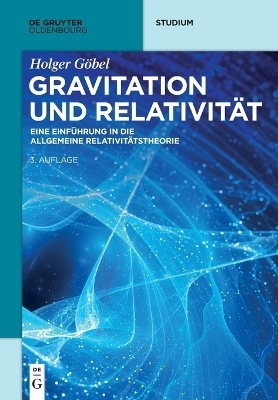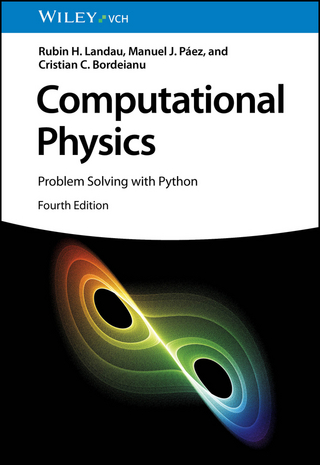
Learning the Art of Electronics
Cambridge University Press (Verlag)
978-1-009-53518-2 (ISBN)
- Noch nicht erschienen (ca. April 2025)
- Versandkostenfrei innerhalb Deutschlands
- Auch auf Rechnung
- Verfügbarkeit in der Filiale vor Ort prüfen
- Artikel merken
The much-anticipated new edition of 'Learning the Art of Electronics' is here! It defines a hands-on course, inviting the reader to try out the many circuits that it describes. Several new labs (on amplifiers and automatic grain control) have been added to the analog part of the book, which also sees an expanded treatment of meters. Many labs now have online supplements. The digital sections have been rebuilt. An FPGA replaces the less-capable programmable logic devices, and a powerful ARM microcontroller replaces the 8051 previously used. The new microcontroller allows for more complex programming (in C) and more sophisticated applications, including a lunar lander, a voice recorder, and a lullaby jukebox. A new section explores using an Integrated Development Environment to compile, download, and debug programs. Substantial new lab exercises, and their associated teaching material, have been added, including a project reflecting this edition's greater emphasis on programmable logic.
Thomas C. Hayes worked as a Wall Street lawyer, then moved to Boston where he learned electronics by attending courses at Harvard and M.I.T. He then taught at Harvard and Boston University. His notes, designed for students new to electronics, grew into a succession of books, culminating in this current edition. David Abrams, after graduating from M.I.T, designed electronic instrumentation before co-founding Galactic Industries Corp. In 2001, David negotiated the sale of Galactic and entered Harvard Law School. After working as an Intellectual Property Associate and clerking for a Federal Judge, he ended up teaching circuit design at Harvard, where he updated the Laboratory Electronics course with the new FPGA and microcontroller lessons contained in this second edition. Paul Horowitz is Professor of Physics and of Electrical Engineering, emeritus at Harvard University, where he originated the Laboratory Electronics course in 1974 from which emerged 'The Art of Electronics' (1980) and its accompanying manual. He was one of the pioneers of the search of intelligent life beyond the Earth. Other research interests have included observational astrophysics, X-ray and particle microscopy, and optical interferometry. He is the author of some 200 scientific articles and reports, has consulted widely for industry and government, and is the designer of numerous electronic and photographic instruments.
Preface to the second edition; Preface to the first edition; Overview, as the course begins; Part I. Analog: Passive Devices: 1. DC circuits; 2. RC circuits; 3. Diode circuits; Part II. Analog: Discrete Transistors: 4. Transistors I; 5. Transistors II; Part III. Analog: Operational Amplifiers and their Applications: 6. Op-Amps I; 7. Op-Amps II: Departures from ideal; 8. Op-Amps III: Nice positive feedback; 9. Op-Amps IV: Parasitic oscillations; active filter; 10, Op-Amps V: PID motor control loop and lock-in amplifier; 11. Voltage regulators; 12. MOSFET switches and an introduction to JFETs; 13. Group audio project; Part IV. Digital: Gates, Flip-Flops, Counters, PLD, Memory: 14. Logic gates; 15. Introduction to programmable logic; 16. Flip-Flops; 17. Counters; 18. Memory; 19. Finite state machines; Part V. Digital: Analog–digital, PLL, Digital project lab: 20. Analog ↔ digital; PLL; 21. Digital project lab; Part VI. Microcontrollers: 22. Microcontrollers I: Introduction; 23. Microcontrollers II: Stacks, timers and input; 24. Microcontrollers III: Using internal peripherals; 25. Microcontrollers IV: Timers & interrupts; 26. Microcontrollers V: Serial communication; 27. Microcontrollers VI: Using an RTOS; 28. Project possibilities: toys in the attic; A. Debugging circuits; B. Pinouts; C. Transmission lines; D. Scope advice; O. Online appendices; Index.
| Erscheint lt. Verlag | 30.4.2025 |
|---|---|
| Zusatzinfo | Worked examples or Exercises |
| Verlagsort | Cambridge |
| Sprache | englisch |
| Themenwelt | Naturwissenschaften ► Physik / Astronomie |
| Technik ► Elektrotechnik / Energietechnik | |
| ISBN-10 | 1-009-53518-8 / 1009535188 |
| ISBN-13 | 978-1-009-53518-2 / 9781009535182 |
| Zustand | Neuware |
| Informationen gemäß Produktsicherheitsverordnung (GPSR) | |
| Haben Sie eine Frage zum Produkt? |
aus dem Bereich


